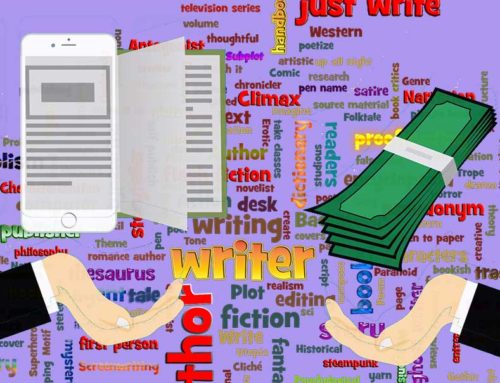
If you want to create a good novel, you need to write convincing and realistic dialogue your readers will love. When your characters are talking, what they say can either have your reader keep turning the pages or make them skip to the next book in their Kindle.
So, what’s the secret?
Here are five tips for authors who want to put great words in the mouths of their protagonists and keep readers in the SOB zone*.
Say it out loud
Read all your dialogue out loud. It can be a good way of finding out if what sounds good in your head rings false in your ears. If you can’t stand the sound of your own voice, let Microsoft Word read it for you – later versions of Word have a Read Aloud feature on the Review tab. Macs also have read aloud features built in.
Let what they’re not saying add to what they are
Don’t just have your characters say things. Have them sigh, growl, grunt, gasp, shout, and exclaim from time to time.
“I wish I had a car like that,” she sighed.
Dive deeper with adverbs:
“I wish I had a car like that,” she sighed enviously.
But go sparingly with adverbs, and with the sighing, growling, grunting, and gasping. There’s a school of thought that insists modern readers don’t like this kind of thing.
“How do you know that?” she enquired doubtfully. “Maybe it’s just some editor claiming readers don’t like it because they don’t.”
“Who knows?” he shrugged with indifference. “Maybe someone did a poll. One thing’s for sure – adverbs and too much crying, crowing, and declaring get a bit much if used in every sentence of dialogue.”
Unattributed speech
This isn’t really about the dialogue itself as much as it’s about not jolting your reader out of the moment.
The trend for dialogue that contains no ‘he said’ / ‘she said’ attribution of speech to characters is said to have been started by Ernest Hemingway. It’s also said to be much liked by modern readers for its no nonsense simplicity (see above).
But no one likes to be confused. When a reader has to stop and think ‘who’s saying this?’ – I’m looking at you, Dan Brown – you’ve just pulled them out of the story to go back and try to figure out who said what over the last dozen lines of back and forth.
There’s nothing wrong with short passages of unattributed speech, but be careful if you’re replacing he said/she said with actions breaking up dialogue just to drop clues as to who’s saying what or you keep having them use the other person’s name.
If simple is best, why not just say Jane said it rather than tossing your reader vague hints that she’s the one speaking?
Having said that, people do do things while they’re talking. Having a character pause and stroll over to window to gaze out thoughtfully a moment, then turn back and continue the conversation adds action that helps break up interminable slabs of dialogue.
Make conversations logical
The failure of characters in a conversation to respond logically to what has just been said also makes readers go “Wait! What?”
“So, you’re getting the info from a police lieutenant, eh? I assume he’s trustworthy, otherwise you wouldn’t be working with him.”
“Yes, she can be trusted.”
Wait! What?
“So you’re getting the lowdown from a police lieutenant, eh? I assume he’s trustworthy, otherwise you wouldn’t be working with him.”
“Not ‘him’ – her. And yes, she can be trusted.”
To thine character be historically true
Don’t put modern words in old mouths. It’s not only jarring when your grandmother says a song on the radio is ‘fully sick’, it’s also jarring when, say, a Regency manservant comes out with a word that didn’t exist until many decades or a century or more later.
“I don’t know why I went into service,” said the 1808 valet. “I hate being around all these snooty folk.”
Online Etymology Dictionary:
snooty (adj.) “proud, arrogant,” 1918, noted that year as college slang, from snoot (n.) + -y (2). Probably with suggestions of snouty (1858); the notion being of “looking down one’s nose.”
This is why writers of contemporary fiction have it easy!
*SOB – suspension of disbelief. Poet Samuel Taylor Coleridge coined the term in 1817, but was talking about suspension of disbelief in the supernatural. In the 20th century, it came to mean (in part) the reader (or viewer of a film) being able to ignore the reality of reading a book or sitting in a darkened cinema in order to be entertained by the story being told.





